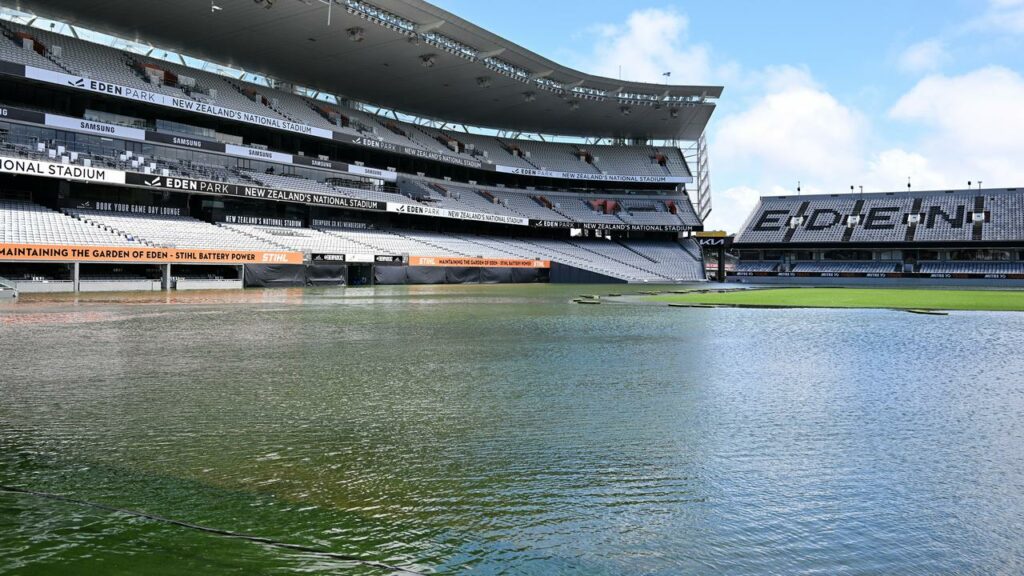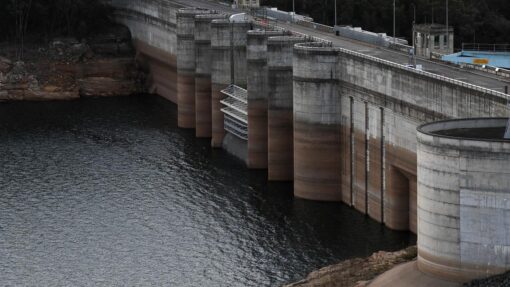Spongiest city no match for deadly ‘atmospheric river’
Marion Rae |

A barrage of floods in Australia and record-breaking rain in New Zealand are devastating usually resilient communities – and slugging insurers.
The severity and frequency of devastation also calls into question the design of cities meant to keep millions of citizens out of harm’s way.
Global design firm Arup has used artificial intelligence tools to study eight major international cities, including New Zealand’s biggest city Auckland, to give them a so-called sponge rating.
Arup found the urban centre of Sydney was the least “sponge-like”, or naturally able to absorb rainwater, of the eight cities.
Auckland ranked top, or “spongiest”, based on modelling of its stormwater systems and extensive green space.
And yet it has been overwhelmed.
“It is already clear that it is the biggest climate event to have ever hit Aotearoa New Zealand,” an Insurance Council of New Zealand spokesman tells AAP.
More than 20,000 claims have been lodged, including 15,000 with Insurance Australia Group, which is a big provider in the market along with Australia’s Suncorp Group.
More than 1600 Auckland houses have been yellow- and red-stickered by council inspectors as hazardous and unsafe, including some of the city’s most expensive harbour-side homes hanging over the edge of landslides.
Sporting ground Eden Park, home to many trans-Tasman clashes, was underwater as more rain mid-week added to the damage after the unprecedented deluge of just over a week ago.
Climate scientists say “atmospheric rivers” can bring beneficial drought-busting rain but are also responsible for some of the most severe flood events.
The streams of moist air are thousands of kilometres long and transport water vapour around the world, contributing to flooding in Australia and devastating Auckland.
Sydney will experience more frequent intense atmospheric river events by the end of the century, increasing the risk of heavy rainfall and flooding, according to the Australian Research Council Centre of Excellence for Climate Extremes.
Changes to building codes to require flood-proof doors and windows, brick walls and floodgates, and using steel frames rather than wood may help.
More extreme measures may include rezoning and moving whole communities.
Georgina Woods, head of impact at risk consultancy Climate Valuation says some risks can be mitigated by making a property more resilient, and some by adaptation or resilience at a municipal level, such as a river levee or sea walls.
But Ms Woods says some homes and communities cannot be protected on an ongoing basis, and planned retreat and buybacks must be on the table.
“Different hazards require different adaptation measures: engineering works, raised floors and planning specifications can mitigate flood risk, but there are high risk places where building homes is not appropriate,” she says.
A Queensland town in the Lockyer Valley has been moved to higher ground after the mayor championed a $30 million land swap following deadly floods.
The floods of 2010/11 damaged nearly every building on the Grantham flood plain and swept across three-quarters of Queensland – killing 33.
Meanwhile, “once in a century” floods keep coming, hitting NSW, Queensland, South Australia and Victoria last year, and most recently Western Australia and the Northern Territory.
Climate Change Minister Chris Bowen says this is not a coincidence, because climate change increases the amount of precipitation and flooding.
“Around the world, natural disasters are becoming more severe, more common and increasingly unnatural,” he says, meaning humans are to blame.
“No country, no region, no town, no family, no person is immune.”
Yet cities continue to cover natural drainage with roads, car parks and buildings when there’s an increasing need for urban areas to operate like sponges during floods.
Urban planning expert Timothy Welch says every new building or road replaces the planet’s natural stormwater system of plants and soil, and channels for runoff.
Auckland-based Dr Welch still backs the idea of a “sponge city”, devised in the early 2000s by landscape architect Kongjian Yu.
Less concrete and asphalt – and more trees, ponds and soil – would allow urban areas to hold more water and evaporate less, making cities more resilient to heatwaves and drought.
Physical geography professor James Renwick wants cities to shift away from being “concrete jungles”.
“Re-expose streams that have been forced into culverts and buried,” he says.
“Create or re-create some wetlands in the urban mix, areas that can soak up some water.”
He says cities could create more nature strips, plant more trees and include more areas of open ground with vegetation.
Upgrading existing storm water infrastructure to have a larger flow capacity is also crucial, requiring significant taxpayer funds.
“This is the really expensive option,” Prof Renwick says.
Ms Woods says there’s also a crucial need to address under-insurance in Australian regional areas at high and escalating risk of flooding.
Climate Valuation modelling estimates one million properties are at risk of flooding by 2030 across dozens of local government areas if nothing is done.
“It’s not fair for individual home owners and business owners to be left carrying the cost of inaction on climate change and neglect of adaptation and resilience planning,” she says.
“The solutions to this will require the cooperation of the insurance industry, banks, government and local communities.”
The Insurance Council of Australia has called for state governments to amend land use laws.
The industry body and five leading insurers met federal ministers in Brisbane last week to work out how to make insurance affordable, or possible.
“Last year’s south east Queensland, northern NSW and western Sydney flood event conclusively demonstrated that there are parts of Australia where existing housing must be relocated, adapted and the land not used,” a spokesperson tells AAP.
The council says many homes are in the direct line of floods because not enough consideration was given at the time of planning to worsening extreme weather from climate change.
AAP


